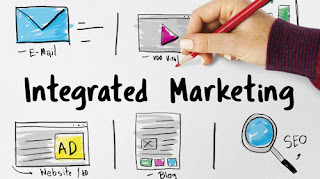The holiday season is officially upon us: The ideal time to revisit your year-end social media strategy to make sure you’re taking advantage of every opportunity to make memorable brand connections with your audience. This article (reprinted in its entirety) from MarketingProfs Today is a good read that outlines seven tips for reviewing and recalibrating your social media effort during this most wonderful time of the year:
Seven Ways to Maximize Social Media This Holiday Seasonby Paul Herman |
November 21, 2017
It's a familiar feeling—retailers are breaking out the Christmas deals and decorations. It's time for the holidays, and that means busy times are ahead for advertisers and marketers launching new sales and promotions.
But, beyond that, advertisers and retailers have a huge opportunity on social media, with holiday campaigns on
Twitter alone generating $6.67 for every $1 spent by advertisers last year.
Being prepared to conquer the holiday rush is a huge advantage, but some brands can easily fall behind before the holiday spirit even hits us. Stay ahead of the competition with the following seven key steps.
1. Define your holiday wish listThe first step for launching any successful ad campaign is to define a set of goals. Every holiday campaign should be built around these two simple questions: What actions do you want your customers/prospects to take, and how will your social strategy help?

Goals can be wide-ranging, from lead generation and driving sales, to boosting brand awareness among a specific target audience. Brands that want to generate leads might launch ads that invite customers to submit their emails in exchange for more content or company information. For the goal of increasing sales on a website, ads can be specially designed to include links to holiday catalogs or special offers.
When such goals are in place, being able to measure success or evaluate a campaign's performance is just as important. Key metrics for marketers looking to improve brand awareness may include social shares, likes, comments, and call-to-action clickthroughs.
Successful brands will set specific, measurable goals for improvement. If a retailer has 100,000 Twitter followers, perhaps its goal might be to increase that number to 120,000 by the end of the holiday season. Regardless of the goal, if it is measurable and clear, it gives the brand something to chase and an ultimate purpose for the campaign.
2. Know the people on your Nice listUnderstanding the customer journey is crucial to optimizing a campaign. Brands should create a buyer persona for their key consumer base, outlining who the customers are, what matters to them, where they go to make purchase decisions, and who influences them. Being able to document where they spend their time online, which social channels they use most, and what they're reading or watching on those channels is a huge plus. Finding that crucial information is fairly easy to do, thanks to modern-day marketing tools and resources.
By better understanding an audience, marketers can figure out how to reach them, which is often the biggest hurdle in building a successful campaign. After all, content may be king for the holidays, but context is queen—and they work best in tandem.
3. Listen to your audience (not just sleigh bells)Social media doesn't exist just to spread a brand message, it's also an important medium for listening. Through social listening, marketers can identify major trends and product keywords in their industries. For instance, knowing those keywords can help marketers identify which social platforms are more popular for a target audience. With that information, they can make smarter decisions about where to spend their money and which products or services to promote on each platform.
Once they have made that decision, retailers can use social to monitor the conversation about its product or services, or one of a competitor's. What are they happy about? What makes them frustrated? What types of things are they looking for? The more a marketer knows about his or her audience, the better and more effective a message will ultimately be.
4. Give the gift of relevanceWhen you're giving a present, you make sure that gift is a match for the recipient's likes or needs. In social advertising, adding geo-targeting to your campaigns is like that: It makes your ad more likely to be relevant. There are also opportunities to target users by age, gender and interests so that your message reaches the people who want to hear it.
For example, if a marketer is looking to target Facebook users age 18-35 who are interested in fashion, a campaign can easily do just that. Targeting not only provides a way to reach specific audiences but also makes the most out of crucial ad dollars.
5. Be a Secret Santa (but don't be creepy about it)Shoppers take their time before buying a product and will often browse a bit before taking a break and returning to the website later on. That behavior makes remaining top of mind a huge challenge for brands, and it's where retargeting comes into play.
For example, Best Buy launches ads that ask customers whether they're ready to check out the items in their shopping cart. Even after people have made purchases, Best Buy shows ads with complementary products they might be interested in.
This method can be effective, but also has its limits. Marketers need to make sure messages naturally fit into the content consumers are already reading online.
6. Surprise and delightSurprise-and-delight tactics are used to nurture a customer relationship through unique experiences that will stay with the customer long after the promotion has ended. These types of tactics are so unique that they're most likely to be shared—and what people share drives what people buy. Today, sharing is the new commerce.
For example, last year, during the holiday season, KLM Royal Dutch Airlines surprised and delighted customers in Amsterdam. Realizing that many holiday travelers spend their transfer time at the airport alone,
KLM decided to surprise its customers with a "Bonding Buffet." Travelers sat down on stools around a KLM tower in the airport. Once the stools were filled, a literal buffet of food came down from the top of the tower:
That thoughtful gesture, which drove ample positive attention on social, highlighted the spirit of the holidays and brought travelers together for a uniquely memorable time at the airport.
7. Don't be afraid to start new holiday traditionsIn the hectic world of social marketing during the holiday season, brands should not limit themselves to just one type of content. Customers can experience fatigue if they receive similar content from the same source; when the volume of messages rapidly increases during the holidays, that type of fatigue needs to be avoided.
One way to change it up is video ads. Often, videos work as an experiment for marketers, and there is no clear strategy or path to success. When that's the case, A/B-testing different options is a great approach to optimize a campaign based on audience response.
Video advertising on social is still a relatively new tactic, and it gives marketers a lot of creative room to develop out-of-the-box concepts.
Use social to make it a happy holiday season
There is no one way to use social media to grow a brand's holiday presence, but keeping these lucky seven approaches in mind can make all the difference between ending the year on a solid note and missing out on a huge opportunity.
Happy Holidays!

























